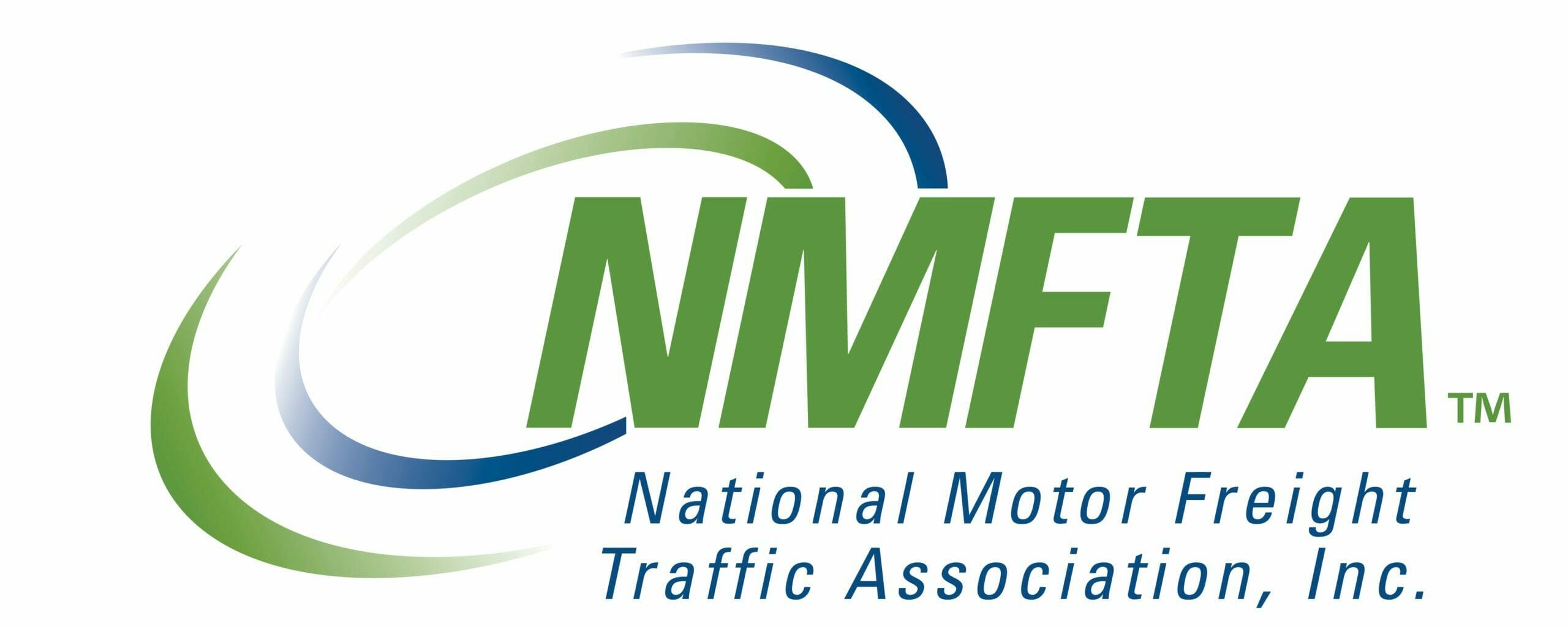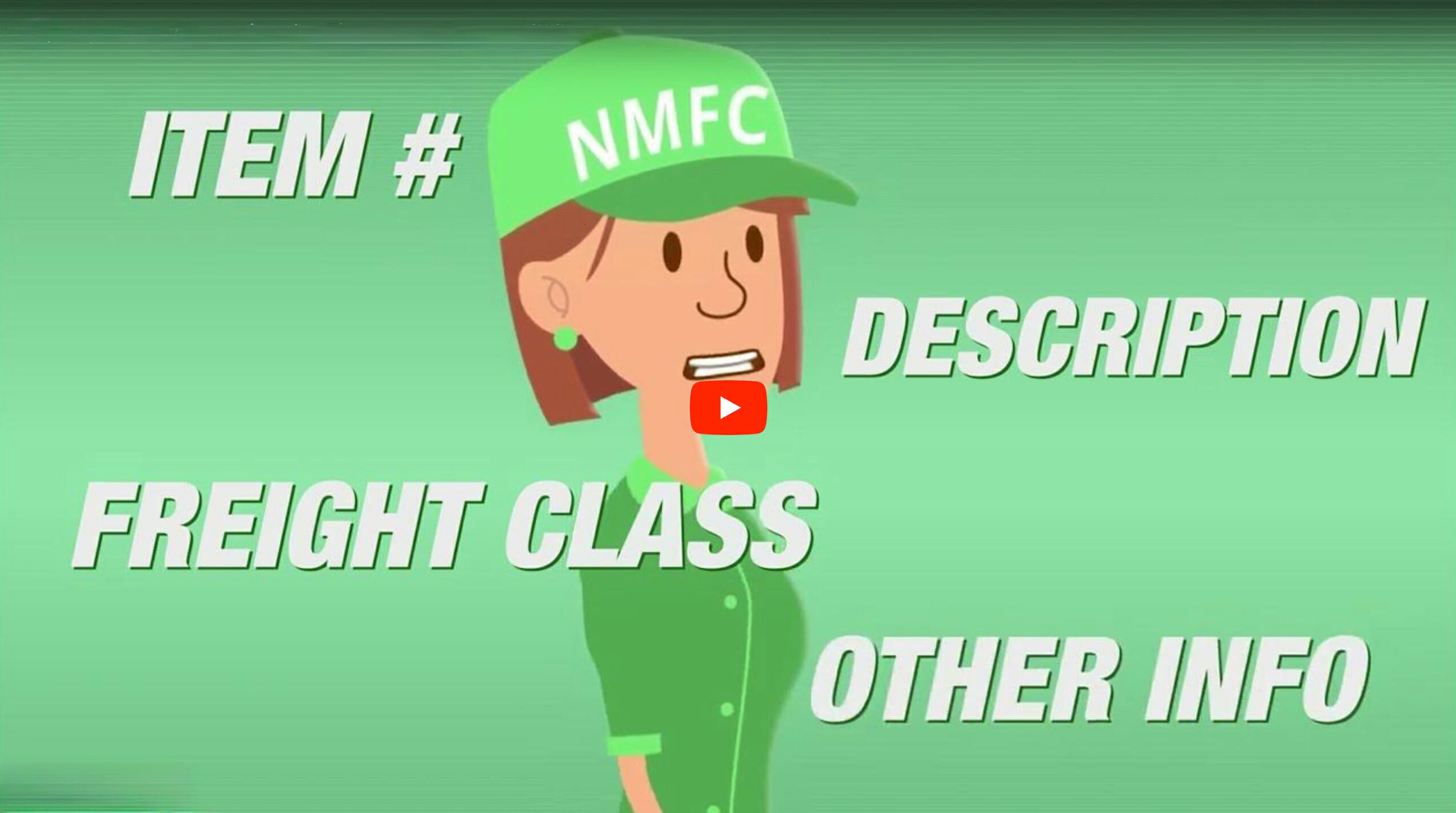
The Standard for Freight Identification and Classification
The National Motor Freight Classification (NMFC)® is a standard that provides a comparison of commodities moving in interstate, intrastate and foreign commerce.
For more in-depth training, please visit: https://nmfta.org/nmfc/training/.
What Is a Freight Class?
A freight class or National Motor Freight Classification is a classification used by shipping companies for less-than-container load freight shipments. Freight classification numbers range from 50-500, and classification levels are determined by weight and other factors. For example, lighter and easy-to-handle loads receive lower classification numbers, while heavier and more difficult loads are classified with higher numbers. Valuable and high-risk/dangerous cargo also receive higher classification numbers.
How to Avoid Freight Class Mistakes
Use a trusted, comprehensive source to determine your specific freight classes to avoid unintentional freight classification mistakes. The National Motor Freight Traffic Association's ClassIT tool helps users calculate transportation characteristics and specific class numbers. When using the calculation tool, it's important to make sure the freight's weight and dimensions are accurate and not based on estimates alone.
Why Does Using the Correct Classification Codes Matter?
The National Motor Freight Classification (NMFC) system is in place to define standard freight classes for carriers to transport goods. It sorts freight into several categories, which are continuously amended by the National Motor Freight Traffic Association™ (NMFTA™). Through this scale, both fleet managers and recipients of cargo have a standard system to identify and classify freight which lets less-than-truckload (LTL) shipments proceed smoothly.
It is important to identify and label the correct freight class when shipping cargo to ensure the transportation process is safe and efficient. If cargo is labeled as the wrong freight class, this can interfere with logistics when loading LTL shipments.
In general, lower freight classifications equal lower shipping costs, while higher classifications result in higher shipping costs. If you accidentally use a lower freight class and your less-than-truckload carrier determines that the class should be higher and reclassifies the freight, the shipper and carrier may incur additional charges.
For example, if a carrier expecting freight in a lower class is met with cargo that should be in a higher class, there may be issues with properly loading trailers. In the reverse case, a carrier might hire more personnel to load an expected high-class freight only to be met with a smaller, lightweight load, which can raise costs for LTL carriers. Both of these situations can result in fees to make up for the loss. Classifications are also subject to change based on factors such as shipping load contents and regulatory updates. To avoid potential issues, it is always important to calculate your classification with a reliable source.
Using the correct classification codes is also important to ensure the safety of personnel and the integrity of the freight. NMFC codes identify cargo based on a number of criteria in order to set regulations for how it should be shipped. For example, refrigerated goods, hazardous materials, and delicate electronics are three types of freight that need to be handled differently than regular cargo, and if a freight shipment is mislabeled, these goods could either spoil or cause a hazard for the personnel handling them.
In order to ensure the integrity of freight and efficiency when shipping goods, it is important to properly label shipments with the correct classification codes. Likewise, following proper freight packaging guidelines is important for a smooth delivery.
What Factors Determine NMFC Codes?
The NMFC assigns a freight class based on four criteria:
- Density
- Handling
- Stowability
- Liability
Based on a combination of these characteristics, a freight shipping class is assigned, ranging from 50 to 500. There are 18 separate classes ranging within these values, with lower numbers indicating cargo that is more favorable to ship. Freight that is in a higher freight class will also have a higher shipping cost, owing to its difficulty to ship.
The weight that each factor has in determining the freight class depends on the type of cargo. Below, each factor is analyzed with examples given to show how a shipment may be classified under the NMFC codes.
Density
Freight density is a measurement of how much space cargo takes up as well as how tightly packed it is relative to its size. This measurement is calculated by taking the cargo's total cubic feet and dividing by the weight of the cargo. The result gives you the freight's density, measured in pounds per cubic foot.
For LTL carriers, a cargo's density matters when considering how to allot space in the trailer. Cargo with more density typically has high favorability and is assigned to a lower freight class. This is because high-density cargo is likely to be more sturdy and less susceptible to damage. Some examples of cargo with high density that would be assigned a lower shipping class include the following:
- Nuts and bolts
- Bulk ingredients
- Hardwood flooring
- Bricks and cement
- Car parts
- Books
On the other hand, some low-favorability items that are less dense and would be assigned a higher shipping class could include:
- Ping-pong balls
- Kayaks
- Wood cabinets
- Mattresses, tables and assembled chairs
Note that the density rating has little to do with the type of material being shipped. While a wooden chair and a hardwood floor may be made of the same material, the chair's length, width and height demand a lot of space on a trailer, leaving it much more susceptible to being broken than a compact hardwood floor tile.
Handling
This is a more simple measurement of how easily freight can be handled, with bulky and larger cargo often having low favorability and being categorized in a higher shipping class. Some examples of cargo that might be assigned a high freight class include loose, large car parts; bulky sofas; loose material packed in wooden crates or pallets and any number of other oddly shaped items.
Other items may be in a higher class based on special protocols that must be followed when handling them. For example, corrosives and other hazardous materials require special training and care when shipping. Sensitive electronics or highly fragile items, such as large instruments, may also be assigned a higher class.
High-favorability items are generally easy to ship and don't require much handling. Some examples of this type of cargo might include anything that fits in a reasonably sized cubic or rectangular box and isn't too heavy. Shipments that come in boxes will usually be assigned a lower freight class due to being easier to handle.
Stowability
Freight stowability is a consideration of how easy it is to stow cargo on a trailer. Items with high favorability are those that come in uniform shapes and sizes, such as a box of nuts and bolts or a bulk shipment of similarly sized items.
Items with low favorability are difficult to stow due to their size or shape. For example, a large sofa, a rolled-up mattress or rug, loose automotive parts or any other non-uniformly shaped item will be put in a higher shipping class. Freight carriers will have to sacrifice space on the trailer for items like this, so they have to charge more to ship them.
Liability
Within the freight industry, some items carry a certain amount of liability to ship. While some items are harmless, LTL carriers often transport hazardous materials of various kinds. Materials such as firecrackers, corrosive materials and other flammables all pose a risk of endangerment and are deemed low-favorability items according to NMFC guidelines.
It's not only hazardous materials that fall under this category, however. Other items that pose no risk of danger, such as refrigerated goods and other temperature-specific cargo, are also considered low favorability and may have a high freight class.
Most other items are high favorability. Everyday items such as tires, machinery, cabinets or furniture, mattresses, or metal parts are not considered a liability and result in these items being classified in a lower shipping class.
How To Determine Freight Classification and NMFC Codes
With all of the commodity types that are shipped every day, it is important to know how to determine the freight class of most items. NMFTA tools such as ClassIT contain all the standard freight classification codes, where you can look up common items. To get the most accurate freight class, be sure to search for specific words in the database to find your product.
You can also measure your item's density on your own to get an estimate of what freight class it will be in. After measuring the density, you can find what freight class items of similar density are classified as through NMFTA, and from there, you can compare your commodity to similar ones to get its NMFC codes.





